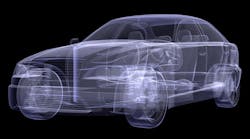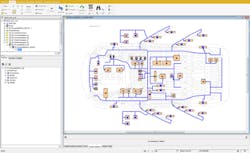Automotive Ethernet is taking over much of the automotive network, but controller area networks (CAN) still handle much of the control communication and diagnostics in the car. In fact, many cars have five or six separate CAN networks. And now the latest CAN-FD standard delivers even higher bandwidth and more features.
On this front, Mentor, a Siemens Business, just released its Capital Systems Network software suite (Fig. 1). It’s designed to speed the development of CAN networks based on the SAE J1939 standard for automotive applications. The tool integrates network and electrical design within the same integrated development system, thus helping to improve network design, validation, and optimization.
Mentor’s Capital Systems Network tool supports development of CAN networks based on the SAE J1939 standard.
The tool includes a library and unified dictionary of SAE J1939 signals, functions, and features. The system not only handles the electrical architecture definition, but also addresses wire harness design, manufacture, and vehicle maintenance. The Capital Systems Network software suite is integrated with MCAD and PLM tools from Mentor.
The tool suite consists of a number of components: Capital Systems Capture handles system description and verification; Capital Systems Architect automatically or manually allocates functions and signals to resources and carriers; and Capital Systems Networks handles network design.
“Capital Systems Networks is a sophisticated tool that addresses the massive complexity associated with today’s automotive network designs,” says Martin O’Brien, vice president and general manager of Mentor’s Integrated Electrical Systems Division. “Designed for optimal scalability and reusability, Capital Systems Networks’ model-based solution enables a generative design approach offering the potential for 90% design efficiency improvement for J1939-based CAN networks, while at the same time handling several thousands of signals.”



